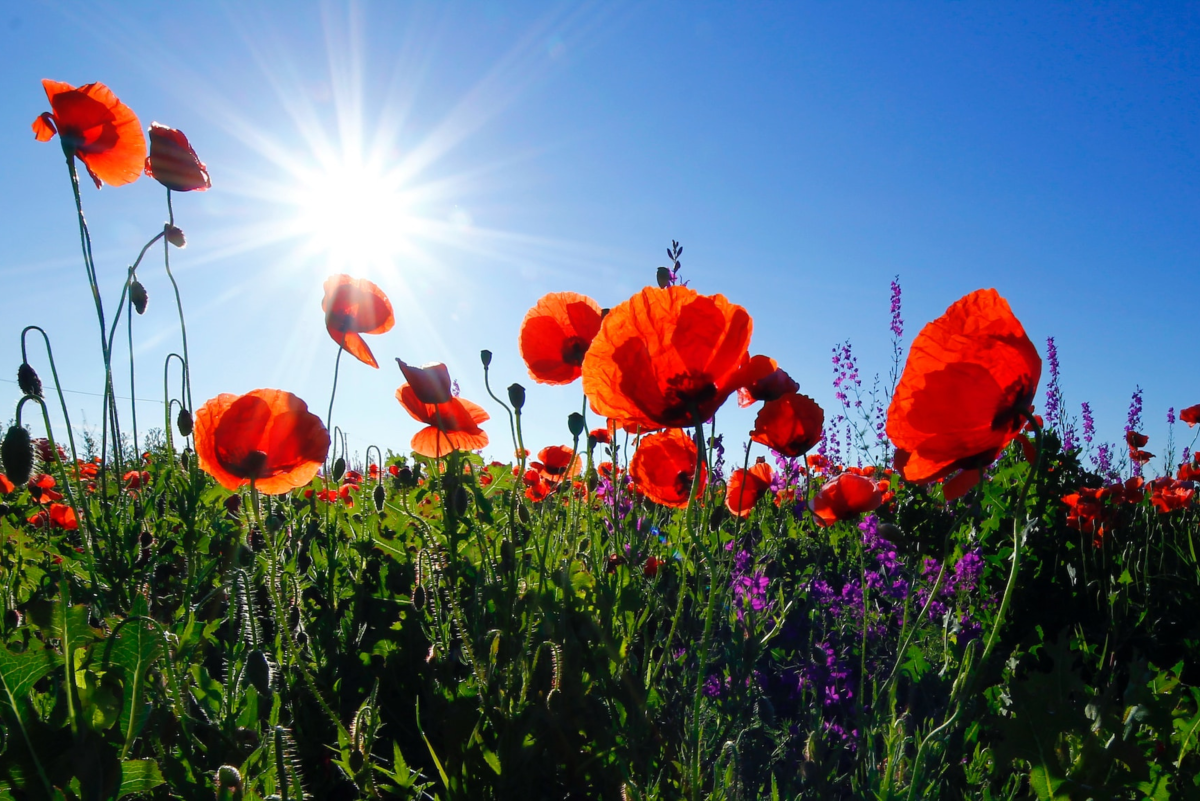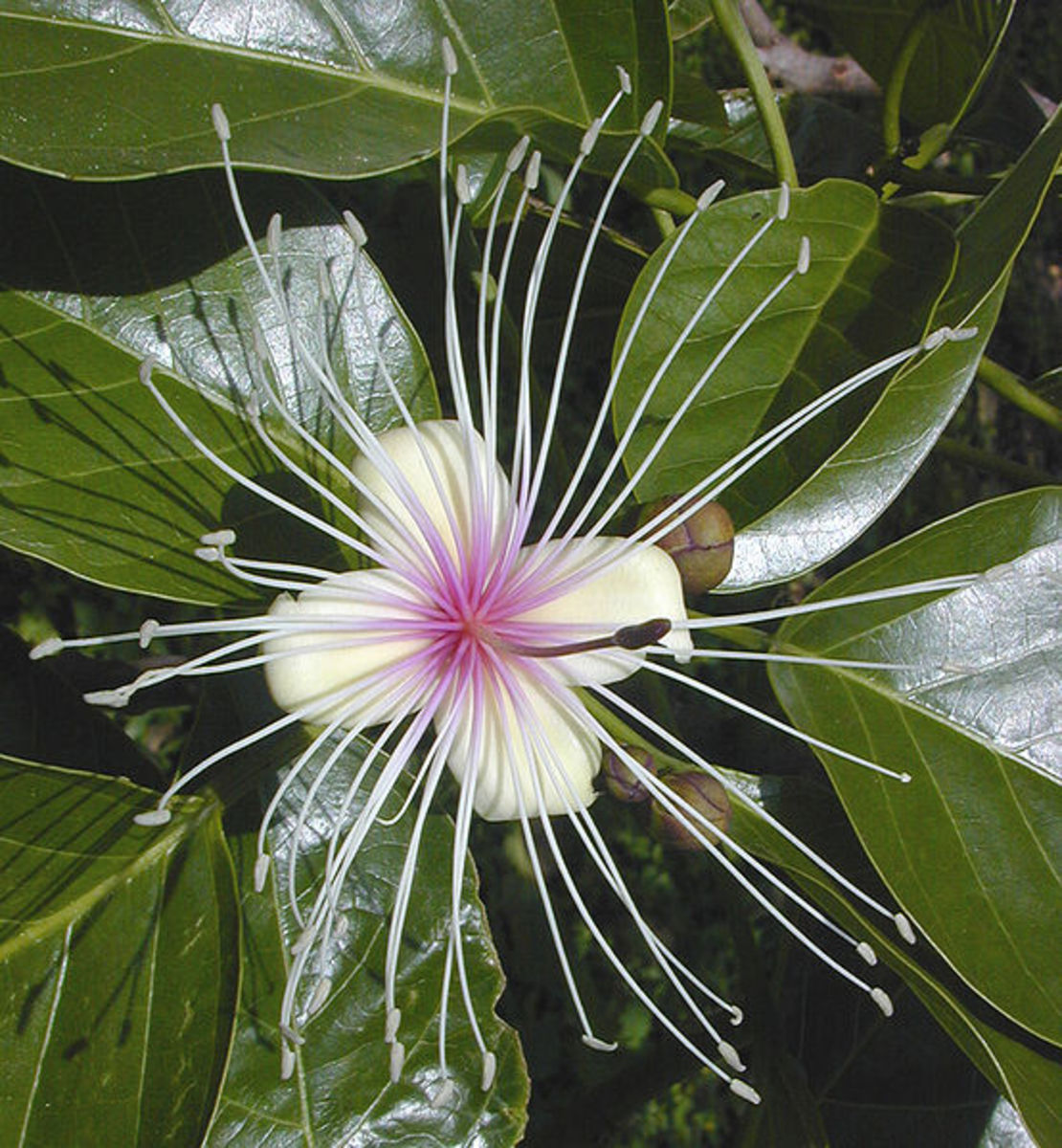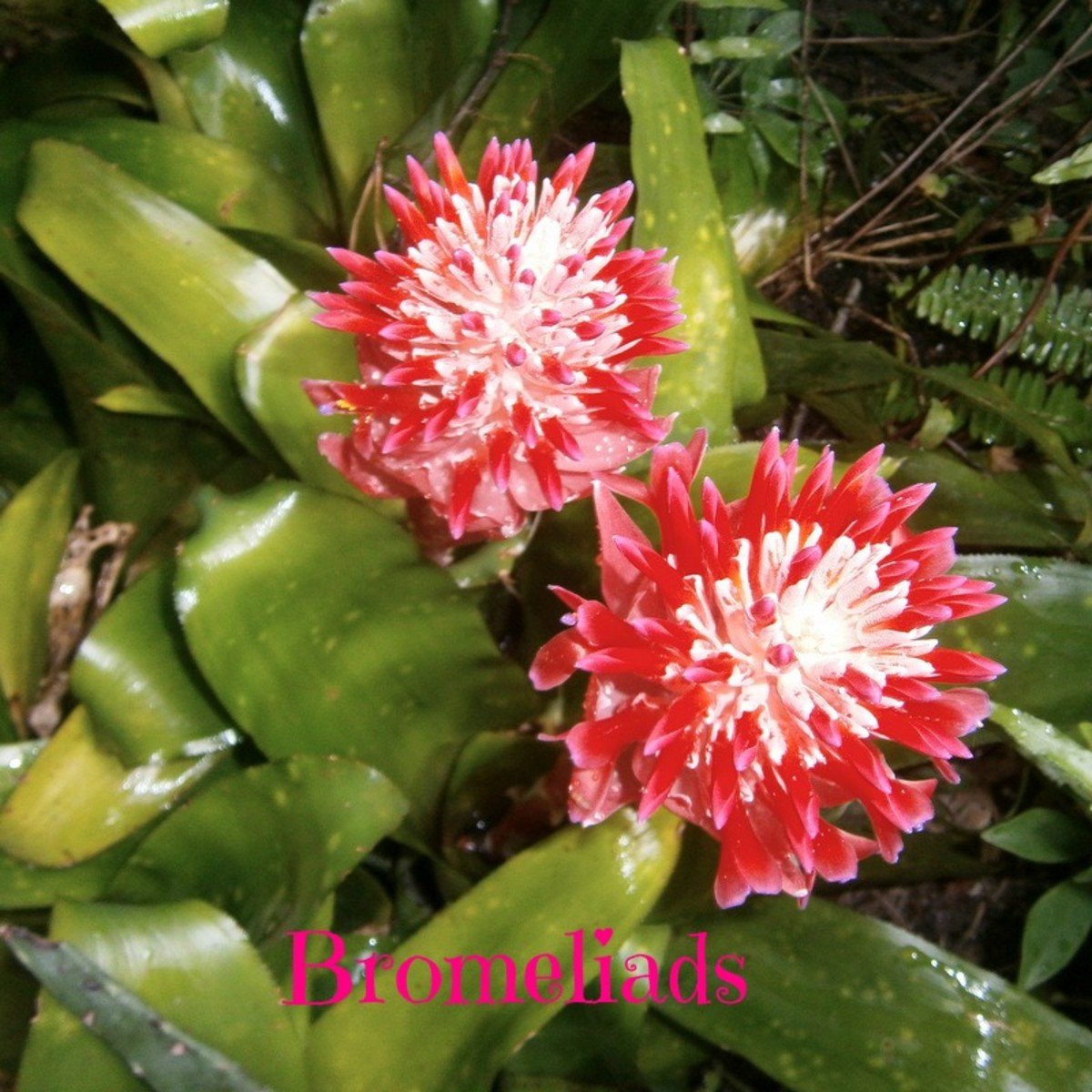A rose is a rose, is a rose -- or is it? The not so rosy rose trade
One week ago
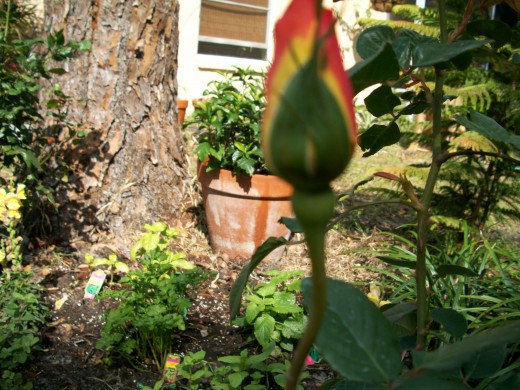
Today
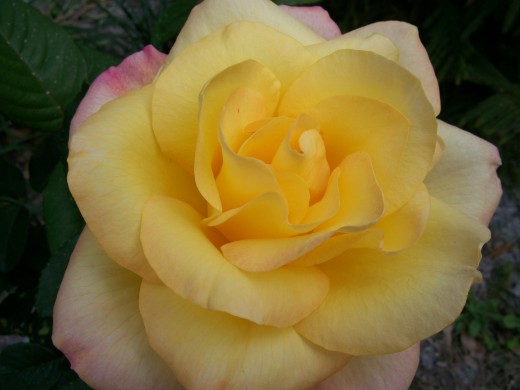
If only you could smell it....
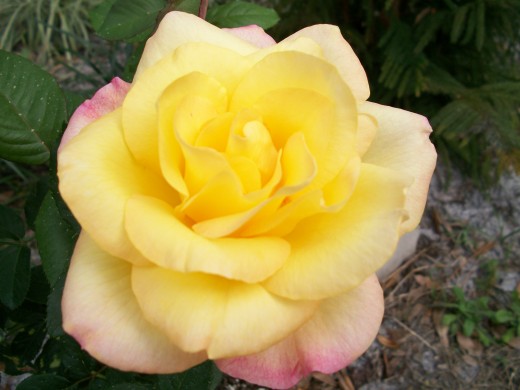
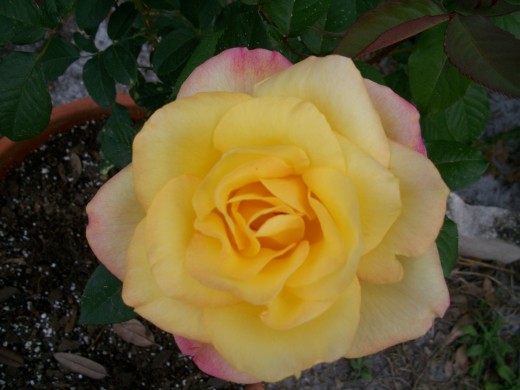
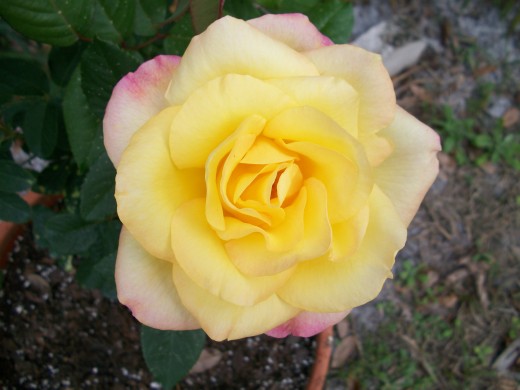
Stop and smell the roses -- proverb
I am not one to shun good advice (well not since I passed the age of forty, and grew a semblance of wisdom.) I worked in the herb garden, pulling the weeds and spreading compost, enjoying the Florida spring day, even though it is February. My Canadian soul can only call a day like this spring: 75 Fahrenheit, a soft southern breeze, a bright blue sky and not a cloud to be seen – sounds more like summer, come to think of it. As if the day wasn’t glorious enough, the soft, moist air carried the sweetest fragrance, one impossible to confuse with any other – a rose in full bloom.
So, I stopped to smell it.
“Rose! Thou art the sweetest flower that ever drank the amber shower:
Even the Gods, who walk the sky, are amourous of thy scented sigh.” -- Thomas More, 1478-1575
What can I, a mere mortal possessed of only a modern vocabulary add to this quotation? Immediately transported by the heady scent of this beautiful yellow-tinged-with-red bloom, my mind wandered and mused on the subject of roses.
Above and to the right are today’s photographs of this luscious bloom growing in my backyard – a perfect miracle of beauty and form. I wish technology existed to transport the scent to you, an electronic scratch and sniff, if you will. Maybe soon – who knows, but until then, you’ll have to appreciate only the sight of this lovely rose.
“One of the most tragic things I know about human nature is that all of us tend to put off living. We are all dreaming of some magical rose garden over the horizon-instead of enjoying the roses blooming outside our windows today.” -- Dale Carnegie -- 1888-1955)
Roses are also big business – roses today
150 million rose plants sold to gardeners, 1.2 billion roses for Valentine's Day
An estimated 150 million rose plants are purchased by gardeners worldwide every year, a phenomenal plant and rightfully known as the ‘world’s favorite flower.’ They are more widely grown than any other ornamental plant.
As cut flowers, they are unsurpassed in popularity. All around the world, lovers carry bouquets of roses to the their beloveds, not lilies, carnations, daisies, or even orchids -- it must be roses! Our culture dictates it as so.
So much are roses enshrined as the bloom of love, come Valentine’s Day American lovers will by 215 million stems, and international suitors will purchase 1.2 billion of the long stemmed lovelies.
“You cannot pluck roses without fear of thorns, Nor enjoy a fair wife without danger of horns” --Benjamin Franklin --. 1706-1790
U.S. production of cut flowers decreased by 50% in a decade
Even the business of roses is not without thorns. In 1995 the U.S. Department of Agriculture reported American production of roses at $122,500,000 and by 2002 this decreased to $67,600,000, while imports of roses rose exponentially. Rose production, like so many others has been outsourced to those countries with cheaper labor, less agricultural regulations and easier climes, and now, 342,000 tons of imported cut flowers pass through the Miami airport alone each year. Today, the USDA informs us the 70% of cut flowers sold in this country are imported.
Where are these flowers coming from? In our hemisphere, the largest producer is Columbia, a little known fact about this country which enjoys greater fame for horticultural products of an entirely different kind.
Floriculture -- poisoning workers and streams of developing nations
Cut flowers, often touted by national governments and international development agencies as alternatives to tropical crops with unstable prices, like coffee, bananas, and palm oil and is even promoted as an alternative to growing coca, the source crop of cocaine. Colombia produces 11% of the world's cut flowers and is second only to Holland in output. Colombia's export business employs 75,000 people growing roses, carnations, and more than 50 other varieties of cut flowers.
If people knew more about the high levels of agrochemicals used in flower production and the often difficult labor conditions under which flowers are produced, they might hesitate to plunge their noses into the petals for the perfume. International agencies charge the floriculture industry--which grows cut flowers in greenhouses--with exposing laborers to dangerous pesticides, with failing to provide health safeguards, and with damaging the environment from overuse of natural resources, and improper use of water-ways as sewers.
Flower-plantation workers near Bogota test positive for residues from 127 types of pesticides. Nearly two-thirds of the Colombian workers suffer from headaches, nausea, rashes, asthma, and other symptoms of pesticide-related illnesses. In addition to the human toll, flower farms -- 20 percent of which are owned by Los Angeles-based Dole Food--have polluted and depleted Bogota's streams and groundwater.
Colombia's success in floriculture has spurred Kenya, Zimbabwe, Ecuador, India, Mexico, China, and Malaysia to take advantage of cheap labor and tropical sunlight to get started in floriculture. Thailand is already very active in the industry, and alas, the attendant public health and environmental problems are abundant.
Many of Europe’s cut flowers come from Africa – notably Kenya, and once more, aside from the problems mentioned above, this is condemned as counterproductive to the continent’s problems, according to the German non-government organization, FoodFirst.
“LIFE is a mosaic of pleasure and pain - grief is an interval between two moments of joy. Peace is the interlude between two wars. You have no rose without a thorn; the diligent picker will avoid the pricks and gather the flower. There is no bee without the sting; cleverness consists in gathering the honey nevertheless.” -- Sri Sathya Sai Baba -- 1926 –
True, there is not beauty without a price, but some feel the price of a pretty bouquet of flowers may be just a little high, environmentally speaking.
5 pounds of carbon per bouquet
Cut roses survive for ten days under optimal conditions, so imagine the rush as they are picked, packed and loaded onto a truck, driven to an airport, moved to the refrigerated cargo hold, flown to Miami, unloaded, loaded again onto another airplane, flown to their destination city, unloaded, loaded again onto a delivery truck and finally arrive at your local florist. They have been refrigerated to 34 F for the whole trip, and will remain refrigerated until you buy them. Add in the environmental cost of fertilizers, pesticides and growing medium, and the average carbon load per bouquet is a minimum of 5 pounds.
So there it is – the less than rosy side of roses, or the rose industry, to be more specific.
“They are not, the days of wine and roses: Out of a misty dream, Our path emerges for a while, then closes, Within a dream” – Ernest Dowson, 1867 -1900
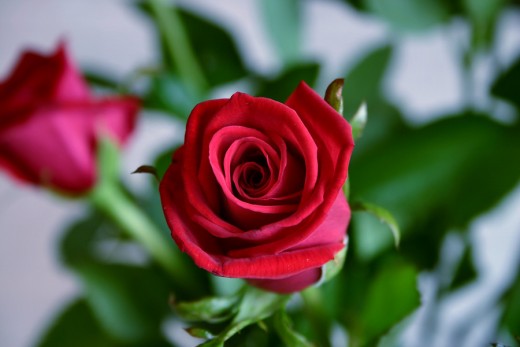
What hold does the rose have on us, that we pay such a price?
Why, why do we do it? Do we feel so strongly about the rose, we are willing to poison our fellow humans, foul our planet, squander resources that could be directed to food production and dedicate our swiftest transportation to deliver them to us?
Long stem roses, Valentine's special $59.99 a dozen
And having done all this, we will happily take out $60 from our hard earned money to buy a dozen and hurry them home to our beloved as a symbol of our affection and dedication. The receiver of our tender devotions carefully follows a time honored ritual: cut the stems under running water with a sharp knife (not scissor that will crush the stem), mix a magic elixir into the vase of tepid (not cold) water and place the bouquet in a spot chosen to stay out of the direct sun to preserve the blooms for the longest possible time – an average of 4 to 12 days.
Even the lover, who cannot afford the requisite dozen, will opt for a single perfect specimen, wrapped carefully in tissue, a plastic reservoir of water on the end of the stem, all done up with a pretty bow and a sprig of baby’s breath and a maiden hair fern.
Roses for Valentine’s Day, roses for the anniversary, roses for that special night or even a poor bedraggled bloom bought from a street vendor while under the influence of demon rum and lust – only a rose will do. Carnations smell like cat pee, and denote a certain cheapness. Lilies are somber, fine for Easter, or a funeral, but don’t carry the same message.
No, make it roses.
“Oh, my luve’s like a
red, red rose, That ’s newly sprung in June;
Oh, my luve’s like the melodie That’s sweetly played in tune.” -- Robert Burns 1759-1796
“Gather the rose of love whilst yet is time.” -- Edmund Spenser 1552 - 1599
“And she was fair as is the rose in May.” -- Geoffrey Chaucer 1343 -1400
Certainly, the romance of the rose has been with us throughout history, if not the commercialism – right?
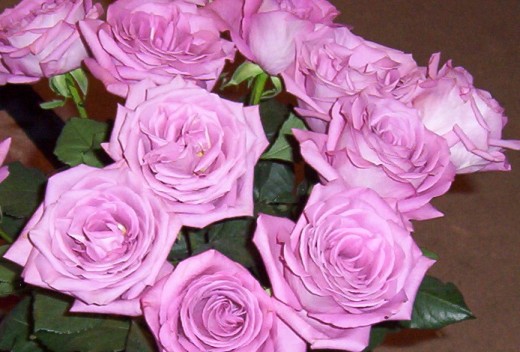
A brief history of the trade in roses: 900 B.C. to 2010 A.D.
The rose has a very long history, with fossil evidence dating back 35 million years, long before there were human hands to tend it, or human hearts to covet it. Roses grew wild from modern day Alaska and Norway, as far south as Mexico and North Africa, but no prehistoric traces exist to suggest roses ever existed south of the equator until brought there by mankind. Garden cultivation of the genus Rosa began some 5,000 years ago, as documented in ancient Chinese scripts.
What Confucius wrote about roses and men's obsession
Modern man’s apparent willingness to sacrifice his fellows, and his land, to put the cultivation of roses even before that of food stuff, is nothing new. In 500 B.C., Confucius wrote of the deplorable state of a society that set so much land to rose cultivation in order to grace the homes of the wealthy, food could not be grown to feed the poor. During the Han dynasty (207 B.C. – A.D 220,) riots and the threat of insurrection forced the plowing under of rose gardens, so obsessed were the landowners with cultivation of the flowers.
The oldest rose in western civilization
In western civilization, the oldest rose identified is Rosa Gallica (Gaul) also known as the French rose. This is a bramble cultivar, growing wild throughout central Europe and western Asia, and is still found there in its natural state. The flower appears in history as early as the twelfth century B.C., when the Persians dubbed it the symbol of love, an appellation which would survive the ages.
One of Rosa Gallica’s descendents is Rosa Damscena -- the fabled damask rose – blessed with a fragrance has been highly prized since 900 B.C. that became part of history.
The damask rose beget an exciting offspring during the rule of the Romans – damascene semperflorens, the ‘Autumn Damask’ with the thrilling ability to bloom twice in one year.
Early trade in the Mediterranean
A brisk trade in roses, rose water and, new on the scene – distilled rose oil criss-crossed the Mediterranean sea for centuries as the Phoenicians, Greeks, Romans and minor potentates all grew, traded and vied for control of the rose trade. Like the American legend of Johnny Appleseed, these traders carried the various cultivars to every land their nationality conquered.
Cultivars cross pollinated, creating differing fragrances, oil content and blooms. From this melee of rose breeding and transplanting, hundreds of names we still know today evolved. Some became famous, like the rosa alba, the White Rose of York (versus the Red Rose of Lancaster in the War of the Roses.) Others became subjects of poetry and art like the Eglantine rose.
The first known catalogue of roses -- 300 B.C.
The first known catalogue of roses is the work of a Greek scientist Theophrastus in 300 B.C. His sketches and description show remarkable diversity such as flowers having anywhere from five to one hundred petals. This work, according to myth, was carried out on the orders of Alexander the Great, famed for his rose gardens, and credited for introducing new cultivars into Europe, and bringing the plant to Egypt.
The Romans and the rose
The Romans fell under the spell of the seductive flower. Records show there were two thousand public gardens in Rome before the fall of the empire in A.D. 476, and on a familiar theme, Homer wrote of the folly and shortsightedness of the Roman Government for allowing acres of rose gardens where food should have been grown.
The end of Roman rule brought about centuries of uncertainty, turmoil, roving armies and marauders and the monks kept roses alive in their herb gardens and some monasteries became centers of botanical research. Once order returned, roses returned to the private gardens.
Medieval roses
By the seventeenth century, royalty accepted roses, rose water and oils as legal tender, and often used such in payments of national debts.
But it wasn’t until the late eighteenth century the ‘floribunda’ species (those that bloom repeatedly provided spent blooms are removed entirely) developed, a revolution in the rose world. These miracle roses were crossbred with hardy native strains, and the modern day garden rose was born.
Roses in North America
Needless to say, early immigrants to the North American continent brought these cultivars with them, and a whole new chapter in rose history began. (Rosa virginiana; Rosa Carolina – the ‘Pasture Rose; Rosa setigera, The Prairie Rose to name a few.)
An early American rose trader was Robert Prince who opened the first American rose nursery in Flushing, Long Island and important an amazing assortment of roses plants. In 1746 he advertised 1,600 varieties. Interesting, records show Thomas Jefferson ordered two ‘centifolias’ for his gardens.
The French became a leading grower and exporter of roses with 5,000 different cultivars available, exporting roses to New Orleans and cities up the Mississippi River.
Roses are entwined in our history
Roses boast an ancient lineage and are intricately entwined in our history and cultures. Today, as has always been the case, many write of the inequities of those who utilize so many of our limited resources in growing roses for the wealthy, when those resources should be applied to food production.
Here we are: the same old rose
Just like the rose, no matter how showy our modern flowers, scratch off our bark and the wild original remains unchanged.
“The seasons alter:
hoary-headed frosts
Fall in the fresh lap of the crimson rose.” -- William Shakespeare 1564-1616
“Don't strew me with
roses after I'm dead.
When Death claims the light of my brow
No flowers of life will cheer me: instead
You may give me my roses now!” -- Thomas F. Healey
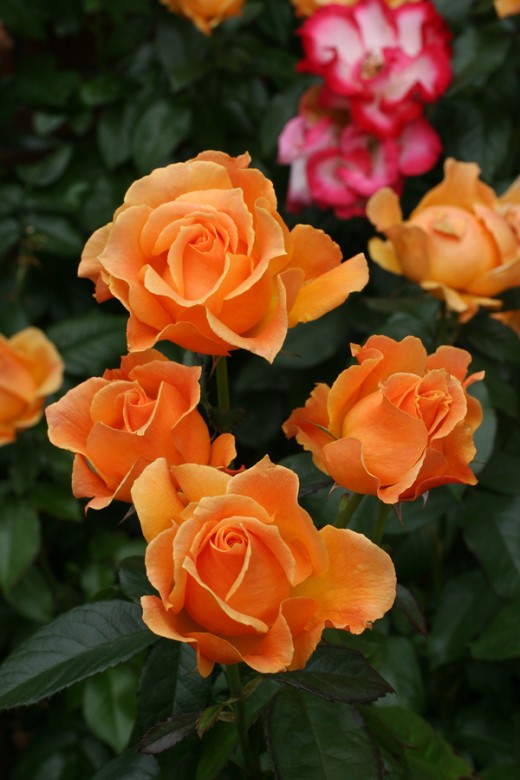
Don't fret that roses have thorns; rejoice that thorns have roses -- another proverb
After this evening, researching the history of my little rose shrub, I wondered where did it come from, and what was the real cost of this $6.99 special from the Home Depot.
This particular shrub began life on a nursery in central Florida, so chances are it grew up hearing English and Spanish. I should probably teach it French, so it may speak the language of much of it's history -- and Latin. (What language did the Phoenicians speak -- does anyone know?)
“What's in a name? That which we call a rose
By any other name would smell as sweet.” -- William Shakespeare
My point is this beautiful flower in my backyard shares all of human history, and a good bit more. Has any other strictly ornamental plant in history been held in such high esteem?
Still I ask myself, what is it about this plant that we sacrifice our own species' best interests to own it, however fleetingly.
Today, for a second, when that delightful fragrance floated to me on a balmy, soft, moist Florida breeze, I understood the obsession. But only for a second.
" Gather ye rose-buds while ye may,
Old Time is still aflying
,And this same flower that smiles today,
Tomorow will be dying." -- Robert Herrick
“Oh, no man knows
Through what wild centuries
Roves back the rose.” -- Walter de La Mare
“Rose of all Roses, Rose of all the World!
You, too, have come where the dim tides are hurled.
Upon the wharves of sorrow, and heard ring
The bell that calls us on; the sweet far thing.” -- William Butler Yeats


